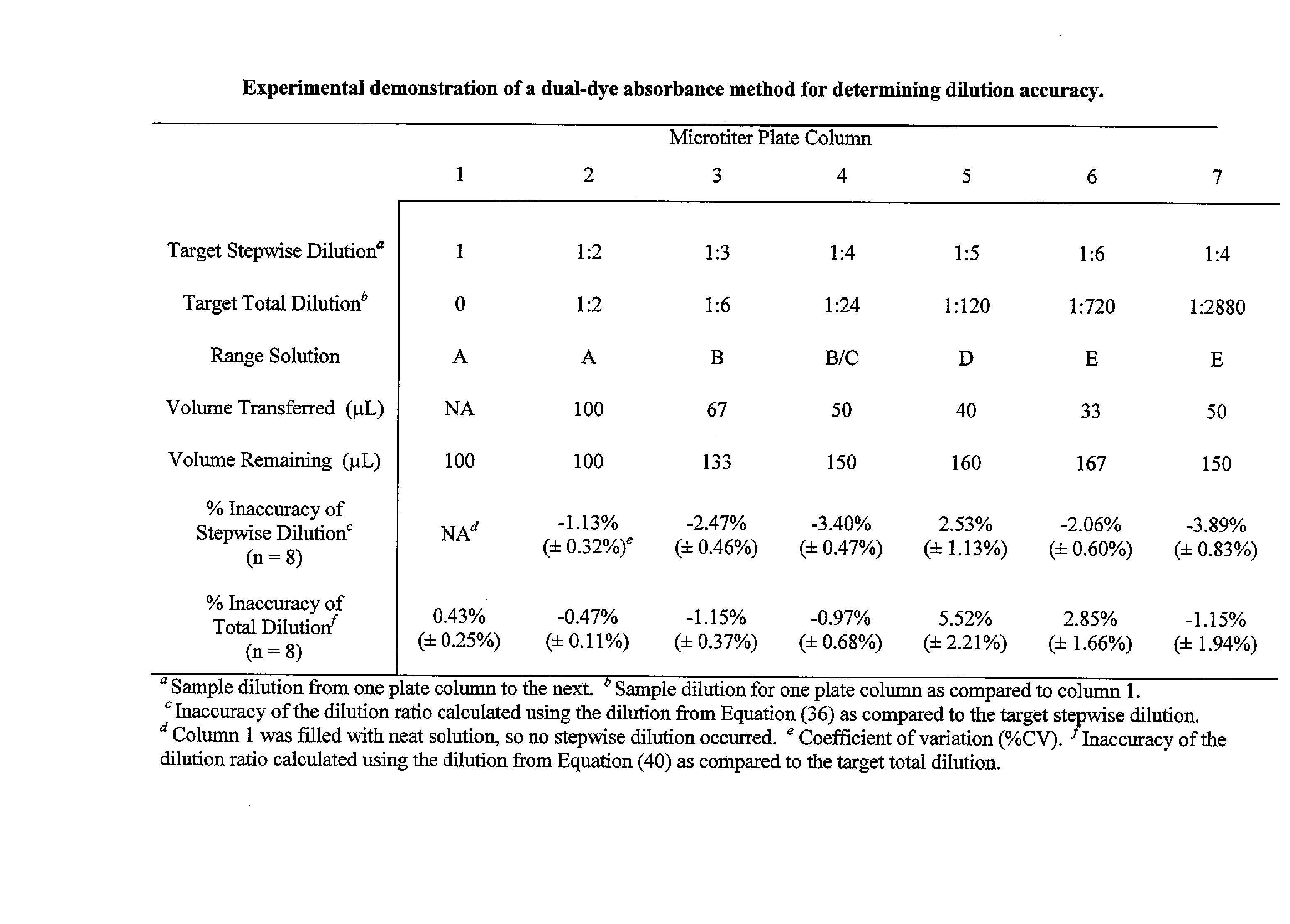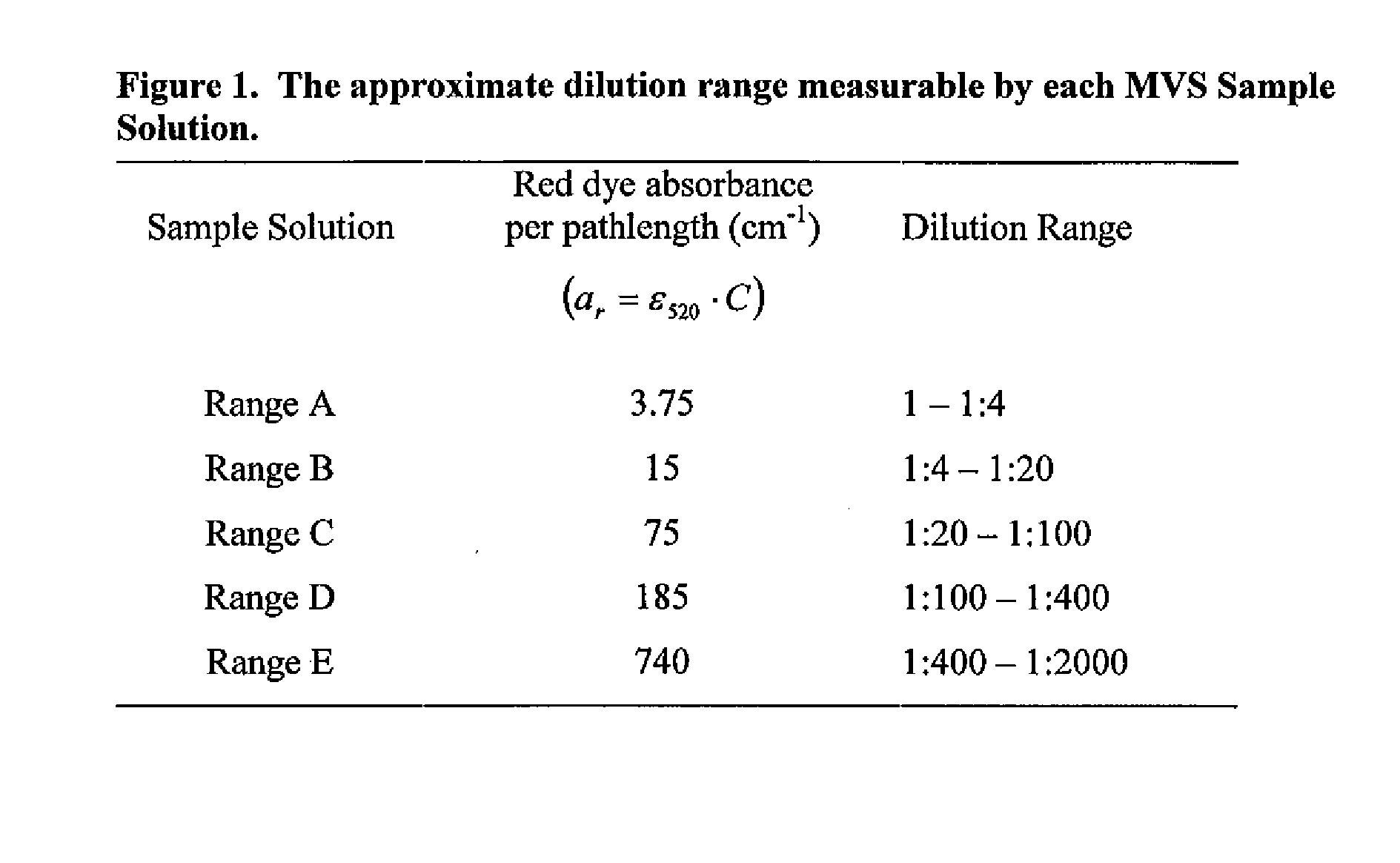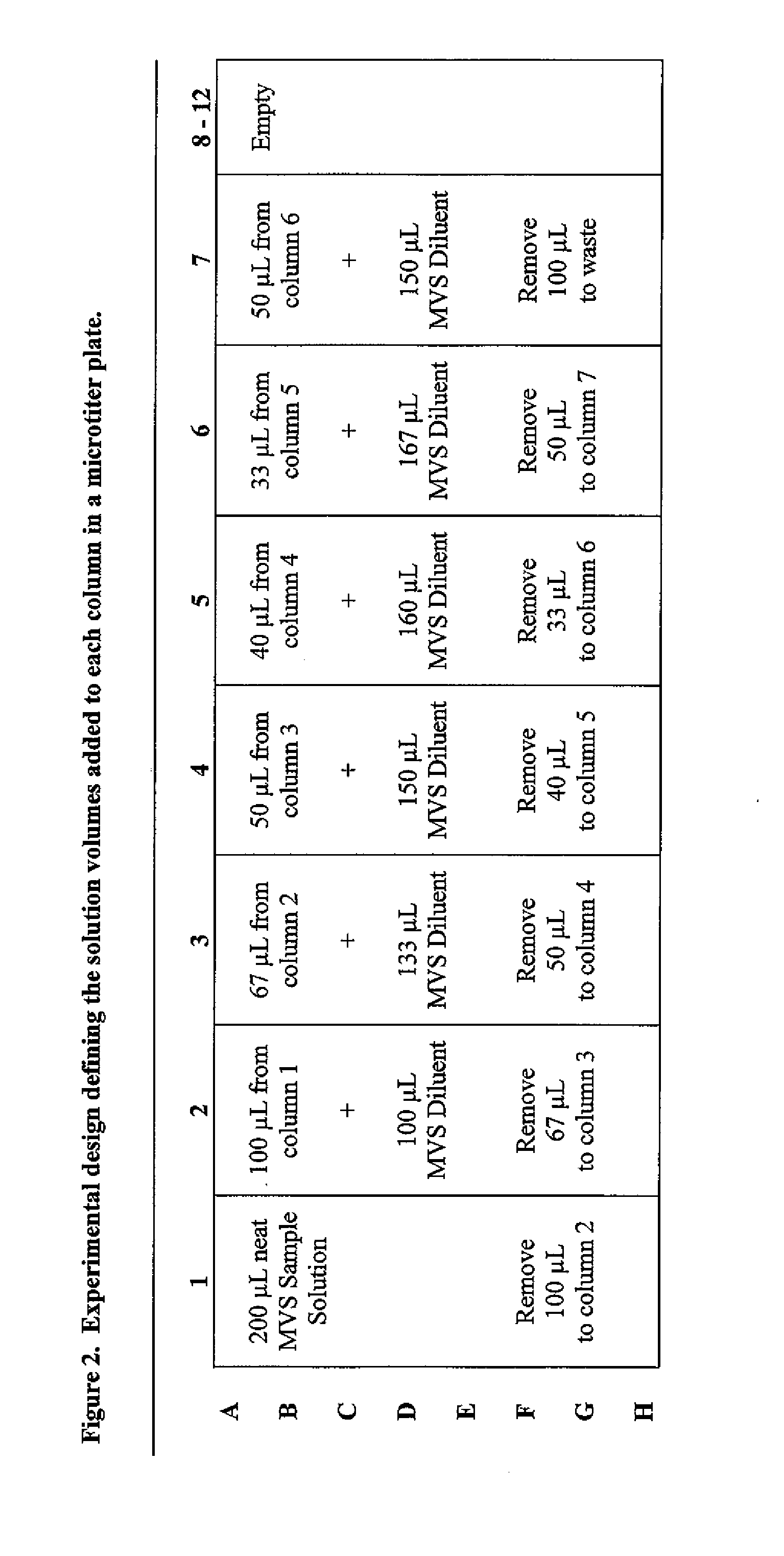Quantitative dual-dye photometric method for determining dilution impact
a photometric method and dual-dye technology, applied in the field of quantitative dual-dye photometric methods for determining the impact of diluting a solution, can solve the problems of affecting the calculation of results, the limitations of the mvs® system and the method of publication, and the types of solvents that may be used to create test solutions from mvs® stock solutions, etc., to achieve accurate calculation of analyte concentration, accurate determination of each dilution
- Summary
- Abstract
- Description
- Claims
- Application Information
AI Technical Summary
Benefits of technology
Problems solved by technology
Method used
Image
Examples
example one
[0089] The process of Example One was carried out for the purpose of determining the dispense accuracy of a liquid handling device, which specifically was a Rainin, 20-200 μL LTS multichannel pipette.
[0090] The process of Example One included the use of a plurality of MVS® Diluent and Sample Solutions (i.e., “Range A”, “Range B”, “Range C”, “Range D” and “Range E” sample Solutions), which arc commercially available from Artel, Inc. of Westbrook, Me. The MVS® Sample Solutions included a common, fixed blue dye (chromophore) concentration and a variable red dye (chromophore) concentration. MVS® Diluent contained the same blue dye concentration as in the MVS® Sample Solutions. The concentrations of red and blue dyes in each of the Sample Solutions and the Diluent are known and well controlled through a rigorous quality control process.
[0091] The MVS® Diluent and Sample Solutions are characterized by the absorbance per pathlength values for their red and blue dyes, as defined in Equati...
example two
[0099] The process of Example Two included the use of the plurality of MVS® Diluent and Sample Solutions described in Example One and is summarized in representative form in the table of FIG. 4. Generally, 200 μL of undiluted (neat) MVS® Sample Solution was dispensed into each well of column 1 of a 96-well plate (i.e., into 8 wells total). 100 μL of the Sample Solution was aspirated from each well of column 1 using the multichannel pipette of Example One and dispensed into the corresponding wells of column 2, each of which contained 100 μL of Diluent solution. The contents of the wells in column two were then mixed by aspirating and dispensing 100 μL three times. 100 μL of the contents of each well of column 2 were aspirated and dispensed into the corresponding wells of column 3, each of which contained 100 μL of Diluent solution. The mixing step was then repeated for column 3. These steps were repeated across the plate resulting in 1:2 dilution steps for each well. The 100 μL sampl...
example three
[0102] Example Three demonstrates the use of the two stepwise dilution calculations presented in Equations (36) and (41) and is represented by the table of FIG. 5. The method of Example Three was not carried out in the same fashion as in the previous two Examples, wherein dilutions were produced from one well to the next in a microtiter plate. Instead, to minimize errors associated with making dilutions, gravimetric dilutions were made of MVS Range C Sample Solution (“Range C”). Three dilutions were gravimetrically made. The first dilution was a 1:20 fold dilution of Range C, made by weighing a desired amount of Range C into a bottle, followed by weighing the desired amount of MVS Diluent. The components were mixed. After mixing, a 1:2 dilution of the mixed sample was performed gravimetrically into a new bottle, and the contents were mixed. A third 1:2 dilution was performed into yet a new bottle. This resulted in three dilutions of Range C; 1:20, 1:40, 1:80.
[0103] Each of the thre...
PUM
 Login to View More
Login to View More Abstract
Description
Claims
Application Information
 Login to View More
Login to View More - R&D
- Intellectual Property
- Life Sciences
- Materials
- Tech Scout
- Unparalleled Data Quality
- Higher Quality Content
- 60% Fewer Hallucinations
Browse by: Latest US Patents, China's latest patents, Technical Efficacy Thesaurus, Application Domain, Technology Topic, Popular Technical Reports.
© 2025 PatSnap. All rights reserved.Legal|Privacy policy|Modern Slavery Act Transparency Statement|Sitemap|About US| Contact US: help@patsnap.com



